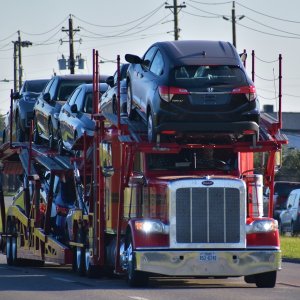ANPACT: Accelerating Heavy-Vehicle Recovery

STORY INLINE POST
Miguel Elizalde, Executive President of ANPACT, explains how the pandemic influenced the heavy-vehicle market and the sector’s plans for a faster economic recovery.
Q: How will USMCA impact heavy-vehicle OEMs in the country?
A: Heavy vehicles have a seven-year period to achieve regional value content (RVC) standards. Labor value content (LVC) and steel and aluminum requirements are already in place, as well. However, due to the work of Minister of Economy Graciela Márquez and Deputy Minister Luz María de la Mora, companies can apply for special regimes so LVC and steel and aluminum requirements can be achieved taking into account the average of an 18-month period.
OEMs need to have a close relationship with their suppliers to meet the percentage of steel and aluminum, as well as LVC while working toward RVC in 2024. At the stage we are in, we consider the local industry successful. That said, it still requires hard work, money, and cooperation. By adhering to the new USMCA rules, Mexico will maintain its leadership as the leading freight-vehicle exporter, fourth-ranked bus exporter, and sixth-leading heavy-vehicle producer in the world. As a country, we will maintain the 85,000 jobs in the sector, of which 18,500 are direct jobs. These are pre-pandemic figures.
Q: How is the enforcement of NOM-044 influencing the heavy-vehicle segment?
A: NOM-044 is a Mexican norm that regulates diesel emissions of heavy vehicles. Vehicles that weigh 3.857 tons or more are included here. NOM-044 is intertwined with NOM-016 on petroliferous, including diesel and gasoline. Mexico is among the few countries in the world that uses both Euro and EPA environmental standards, which creates a greater and better offering in the market.
In 2018, Mexico had Euro IV / EPA 04 technologies and NOM-016 ruled that the country was supposed to have ultra-low sulfur diesel by the end of 2018. Mexico’s Ministry of Environment and Natural Resources (SEMARNAT) took this as a reference to establish NOM-044 that implied that by mid-2019, only Euro V / EPA 07 vehicle imports or local manufacturing for the domestic market would be allowed. However, PEMEX asked for a prorogue to comply with NOM-016 and ultra-low sulfur diesel production.
Euro V and EPA 07 vehicles can work with regular diesel if it is close to 50 ppm. The next deadline was set for Dec. 31, 2020, when only Euro VI / EPA 10 vehicles would be allowed to be imported or produced locally for the domestic market. These vehicles only work with ultra-low sulfur diesel. As PEMEX received authorization to continue distributing regular diesel, the planned process to implement NOM-044 was interrupted.
SEMARNAT is aware of this situation, which was in fact further complicated by the pandemic. An extension for NOM-044 was granted and Euro V / EPA 07 vehicles will continue to be imported or produced locally for the domestic market until Dec. 31, 2021. This extension is about to become official.
PEMEX supplies 75 percent of the diesel in the country and has no legal obligation to supply it to the entire territory. The rest is supplied by private parties. This scenario motivated Mexico’s Energy Regulatory Commission (CRE) to adjust NOM-016 so that PEMEX can comply with ultra-low sulfur diesel supply. Originally, PEMEX’s supply was set in the three major metropolitan areas, the northern border region, and 11 industrial corridors. The adjustment implied PEMEX is allowed to supply regular diesel in the industrial corridors up to six months after the pandemic is officially over.
The adjustments to NOM-016 are still pending and the specifics could be known by 1Q21. Should the ultra-low sulfur diesel supply dates change, NOM-044 will have to be adjusted accordingly. The current scenario dictates that regular diesel will be supplied until 2024. ANPACT expects NOM-044 to be discussed in 2021 when the sector will know for sure when ultra-low sulfur diesel will be in fact mandatory. We insist that both Euro V / EPA 07 and Euro VI / EPA 10 technologies need to coexist given the country’s energy reality.
Q: How are new technologies influencing the heavy-vehicle market?
A: Electric vehicles are a reality and, in time, autonomous features will reach heavy vehicles given the expected ROIs. In fact, autonomous vehicles could solve the problem of the scarcity of freight transportation drivers globally.
The advancement of EV trends will rely on battery life. A heavy EV requires a greater initial investment than diesel. When taking into account that the average age of Mexico’s heavy-vehicle park is 22 years for freight transportation and 19 for buses, the leap into electrification might seem complicated. Before getting to EVs, however, the market will experiment with other technologies such as hybrid and natural gas vehicles. This does not mean we are not ready to use this technology. Many electric buses are already used in public transportation across different cities but we need to think about ROI and the incentives the industry requires.
ANPACT has insisted that vehicle renovation goes hand-in-hand with five important elements. First, the industry needs green incentives for electric vehicles, natural gas vehicles, and the newest technologies. If the vehicle park is 22 years old on average, those are really old emissions standards. Second, the market needs more financing. The federal expenditure budget and federal income law for 2021 do not take into account financing for heavy vehicles, although this could change as it is still being discussed in Congress. Third, the sector needs professionalization. Practically all transportation companies in Mexico started as owner-operators. Even though the knowledge was passed on to younger generations throughout the years, training in business management is still necessary.
Those are the three most popular points. The other two are the elephant in the room. The fourth and fifth elements are updating the legal framework and applying that legal framework. The former implies updating all related norms, including NOM-016, NOM-044, and others, while the latter requires enforcement of the norms.
Q: What are the most relevant impacts of the pandemic on the sector?
A: The pandemic has had an impact on vehicle renovation as we are selling 49 percent below last year’s rate. For an economic recovery, we need to bet on vehicle renewal. This will support the sector horizontally. Approximately 56 percent of all cargo and 83 percent of land transportation use trucks. Meanwhile, 96 percent of all passengers traveling between states, 27 percent of students, and 41 percent of workers move by bus. Economic recovery is fundamental to boost SMEs and create a domino effect that starts with the pillars of mobility and logistics.
When the pandemic started, our sector was not labeled as essential, which put a stop on sales and only allowed for maintenance operations. It took us two months to be labeled as essential by the federal authorities. From manufacturing to vehicle plating, the entire chain was disrupted.
Vehicle plating represents a great challenge for the sector. Mexico’s Ministry of Communications and Transportation sent most of its staff to the home office amid the pandemic. Seventy percent of the sectors’ sales are plated by the SCT and for over three months no plates were issued. In Mexico City, for instance, to get a plate can take up to three months. This prevents new vehicle sales since no one will buy a new truck that will be parked for more than three months. In Guadalajara and Monterrey, the situation is similar. We have had talks with the authorities to create solutions for this problem given that the industry’s recovery is also influenced by this. Our proposals include dealerships taking care of plating and support for online procedures.
Q: How is ANPACT collaborating with INEGI on open data?
A: ANPACT was looking for a neutral party, such as INEGI, to publish the data related to heavy-vehicle production and exports, which are useful to the industry and academia and for economic competition. For seven years, there were no figures at all. At ANPACT, we believe that transparency is healthy and promotes competition that serves the final consumer. Now, all ANPACT members are reporting retail sales, wholesale, production, and export figures.
Q: How is the pandemic distorting market performance?
A: Buses are being used less. A public transportation system used to transport 100,000 users daily is facing income troubles as in some places there are only half of the regular users. On the other hand, companies are implementing more staff transportation programs at a lower capacity. This does not necessarily imply an increase in vehicle sales, given that many school buses are stopped. Besides, for every 100 vehicles sold in Mexico, 25 junk vehicles are imported from the US.
When it comes to transportation and last-mile logistics, e-commerce and last-mile delivery companies are growing. Logistics are changing and the industry is changing as well. Wholesales between January and September fell 49.3 percent, while retail sales fell 40.6 percent in the same period. Accumulated production fell 38.4 percent and production dropped 45 percent. We were aware of the decrease but not at those rates. To assure a faster recovery, we insist on our five points toward vehicle renovation: incentives for new vehicles, financing, professionalization, regulatory reforms, and regulatory compliance.
The priorities for ANPACT are to focus on economic recovery and accelerate SCT’s vehicle plating processes. After this, we will take a closer look at financing and incentives for vehicle renewal, which also results in benefits for the environment and society in general.
The National Association of Bus, Truck, and Tractor-Trailer Manufacturers (ANPACT) represents heavy-vehicle and engine manufacturers based in Mexico. It promotes the development of the commercial vehicle industry in the country

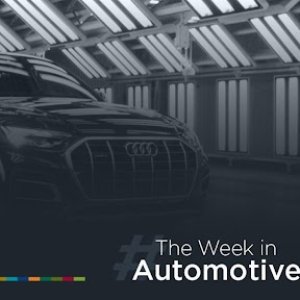


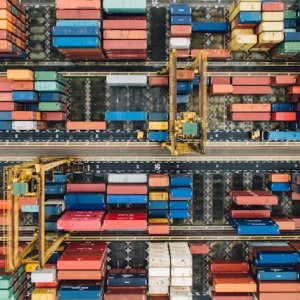
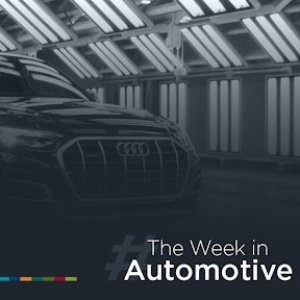

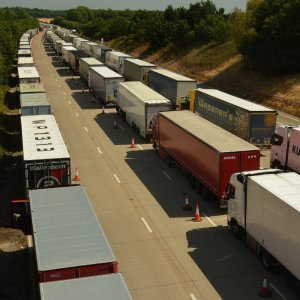
 By Alejandro Enríquez | Journalist and Industry Analyst -
Tue, 02/02/2021 - 11:36
By Alejandro Enríquez | Journalist and Industry Analyst -
Tue, 02/02/2021 - 11:36






